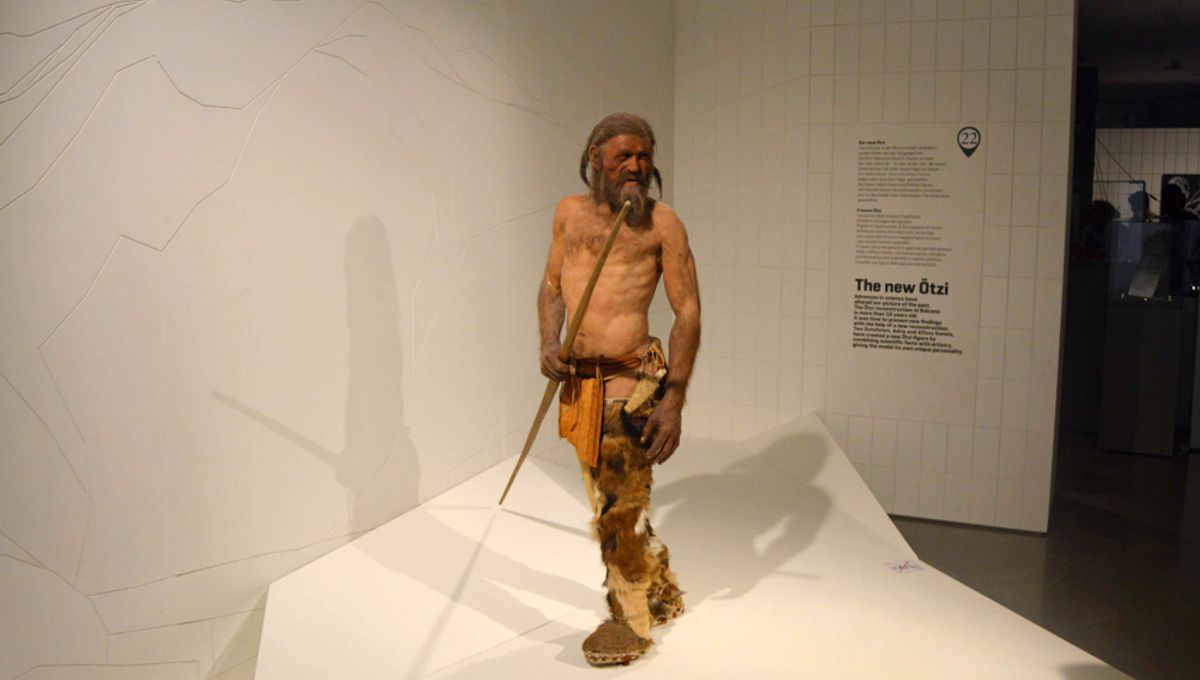
More frozen mummies like Ötzi the Iceman could be revealed as rising global temperatures cause ice to melt, argue the authors of a new study. Previously, researchers had attributed the ancient murder victim’s longevity to a series of happy accidents that had kept his body frozen for millennia, yet more recent analyses suggest that Ötzi’s circumstances may not have been so unique after all.
“When Ötzi, the Iceman, was found in a gully in the Tisenjoch pass in the Tyrolean Alps in 1991, he was a huge surprise for the archaeological community,” write the study authors. “The lead initial investigator of the find argued that it was unique, preserved by serendipitous circumstances.”
This hypothesis came to be known as the “disaster theory”, and states that Ötzi was once a valley-dwelling shepherd who was forced from his home 5,100 years ago following a violent conflict. Some of his possessions were damaged in the scuffle, yet with no time for repairs, Ötzi fled to the mountains, where he died in a snow-free gulley.
“Exposed on the surface, the body freeze-dried, which led to the exceptional preservation,” explain the study authors. “A short time later, a glacier covered the area, and buried the body and the artefacts for more than five millennia, like in a time capsule.”
Such a theory was later backed up by scans that revealed an arrowhead lodged in Ötzi’s shoulder, indicating that he was indeed the victim of an attack and probably died from his wounds. However, further investigations conducted over the past 30 years suggest that the disaster hypothesis may be wide of the mark.
For starters, while the presence of sloe berries close to Ötzi’s body had initially led to the conclusion that he died at the end of summer, pollen that was subsequently found in his gut indicates that he may actually have perished in spring. In such an eventuality, the body would have been exposed throughout the summer, and would not, therefore, have become frozen shortly after death.
Furthermore, analysis conducted on fragments of a Bronze Age ski that was found on the Lendbreen ice patch in Norway revealed how seasonal cycles cause items on snow and ice to become broken and displaced. Noting the similarities between Ötzi’s damaged possessions and the Lendbreen ski, the authors say that the Iceman probably didn’t die in the gulley after all, but would have been swept there at a later date by meltwater.
Finally, the researchers challenge the idea that Ötzi was protected by a glacier that formed over the gulley shortly after his death. Instead, they say that the glacier probably appeared around 3,800 years ago.
Based on this information, they claim that “Ötzi was not permanently buried in ice immediately after his death, but that the gully where he lay was repeatedly exposed over the next 1,500 years.”
What this all means is that “the chances of finding another prehistoric human body, in a similar topographical setting as the Tisenjoch, should therefore be higher than previously believed, since a string of special circumstances is not needed for the preservation of this type of find, and relevant locations are now affected by heavy melt events.”
In other words, the Iceman probably isn’t as unique as first thought, and more ancient corpses may be waiting to be discovered as the climate changes.
The study is published in the journal The Holocene.
Source Link: Ötzi The Murdered Iceman May Not Be A One-Off